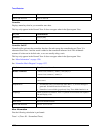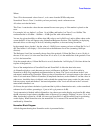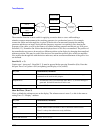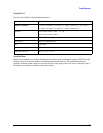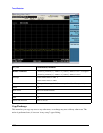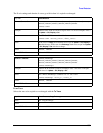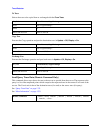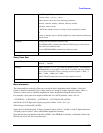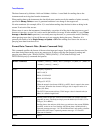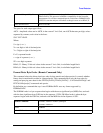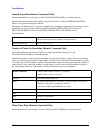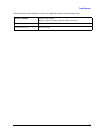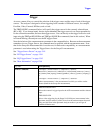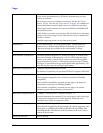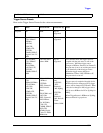
1334
Trace/Detector
The data format set by FORMat:DATA and FORMat:BORDer is used both for sending data to the
instrument and receiving data from the instrument.
When sending data to the instrument, the data block must contain exactly the number of points currently
specified in
Sweep, Points or error is generated and there is no change to the target trace.
No units terminator (for example, dB or V) is used when sending data; the data is taken as being in the
current Y-axis unit of the test set.
When a trace is sent to the instrument, it immediately overwrites all of the data in the target trace, even if
that trace is inactive, or even if it is active and in the middle of a sweep. If in the middle of a set of
Trace
Average
or Max/Min Hold operations, it can totally mess up the result, so you must be careful. Similarly,
when querying trace data, it is best if the test set is not sweeping during the query. Therefore, it is
generally advisable to be in
Single Sweep, or Update = Off when sending trace data to the test set or
querying trace data from the test set.
Format Data: Numeric Data (Remote Command Only)
This command specifies the format of the trace data input and output. It specifies the formats used for
trace data during data transfer across any remote port. It affects only the data format for setting and
querying trace data for the :TRACe[:DATA], TRACe[:DATA]?, :CALCulate:DATA[n]? and
FETCh:SANalyzer[n]? commands and queries.
Remote Command: :FORMat[:TRACe][:DATA] ASCii|INTeger,32|REAL,32 |REAL,64
:FORMat[:TRACe][:DATA]?
Notes: The query response is:
ASCii: ASC,8
REAL,32: REAL,32
REAL,64: REAL,64
INTeger,32: INT,32
When the numeric data format is REAL or ASCii, data is output in the current
Y Axis unit. When the data format is INTeger, data is output in units of m
dBm (.001 dBm).
The INT,32 format returns binary 32-bit integer values in internal units (m
dBm), in a definite length block.
Dependencies: Sending a data format spec with an invalid number (for example, INT,48)
generates no error. The analyzer simply uses the default (8 for ASCii, 32 for
INTeger, 32 for REAL).
Sending data to the analyzer which does not conform to the current FORMat
specified, results in an error. Sending ASCII data when a definite block is
expected generates message –161 "Invalid Block Data" and sending a definite
block when ASCII data is expected generates message –121 "Invalid
Character in Number".
Preset: ASCii



